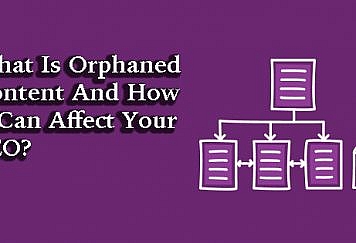Google’s search engine results page, or SERP, has a huge impact on the marketing techniques companies adopt. The SERP is what pops up after your audience member enters a question or phrase into the search engine bar. Being seen on Google is critical to earning your audience’s business.
As a content strategist, therefore, one of your ultimate goals should be to improve your position in Google’s SERP. In order to achieve that objective, here are three things all content strategists should understand about Google’s SERP.
1. Google SERP Is Always Evolving
At first glance, Google’s SERP may not seem to have changed much over the years. It has maintained a straightforward appearance with paid ads followed by truncated descriptions of relevant pages displayed in seemingly random order. But there is nothing random or fixed about the SERP. It changes frequently, but its main purpose is always the same: to help users find the most relevant sites based on their search queries.
The trouble with obtaining a good Google SERP rank is that it’s not a one-and-done deal. Once you earn a top spot, you have to work to keep it. Since Google SERPs are always evolving, you have to stay flexible if you want to maintain or improve visibility. But what if you seem to be doing all the “right” things but you’re failing to rank in Google’s SERP? If this is the case, it may be time for an in-depth SERP analysis.
A SERP analysis can reveal helpful insights into why you’re not currently achieving a high Google SERP rank. It can suggest ways that you can modify your content to provide greater value to readers. It can also identify the strengths and weaknesses of your current keyword strategy so you can achieve a more competitive SERP rank.
2. You Need Both SEO and SEM to Rank Well
Many content strategists focus almost entirely on improving their search engine optimization techniques to achieve better SERP visibility. But SEO alone isn’t enough to get you the rank you want in Google search results. That’s why businesses that know what they’re doing utilize the power of search engine marketing along with SEO. Together, these two approaches can help you reach your SERP marketing goals.
SEO is a process that helps you achieve a higher organic rank in SERPs. The term “organic” in this context simply means a rank that’s achieved without using paid methods. SEO involves using targeted keyword campaigns to achieve the rank you want. It can take months of content creation efforts to yield satisfactory results with SEO, but the results are worth it. Though achieving a coveted organic rank takes longer, it is generally a more durable and sustainable way to maintain a good SERP rank.
SEM is the process of using advertisements and paid listings to achieve good SERP visibility. Google Ads is one of the most commonly utilized SEM tools. It displays your paid ads in the sidebar of the SERP, as well as above and below organic search results. Paid results may not be as durable as organic listings, but they can help you gain instant visibility. When you use both SEO and SEM techniques in tandem, you can maximize your return on investment.
3. Leveraging SERP Features Can Give You an Advantage
Beyond organic results and paid ads, other search features can impact your SERP rank. SERP features (also known as rich snippets or search result features) are determined by Google. However, you can influence what search features appear in your listing by ensuring your website and content are SEO-optimized and value-driven.
Some of the most common features used in rich snippets include site links, image packs, reviews, and videos. If you want Google SERP to show some of these features in your site’s listing, you need to include those features in your content. For example, if you want to appear in the Google SERP videos section, you need to create engaging video content.
But simply creating videos is not enough. You also need to optimize your videos to improve their likelihood of achieving a good rank in search engine results. You can do this by ensuring they are relevant, engaging, and informative. You’ll also need to include strategic keywords in the title, description, hashtags, and video content. Follow the same optimization processes for other search result features you want to be included in your site’s SERP listing.
There are hundreds of different search engines used around the world, so why does this guide focus only on Google SERP? The answer is simple. When it comes to search engines, Google is king, claiming over 93% of the U.S. mobile search market share as of October 2022. That’s why many companies focus primarily on improving their Google SERP rank and worry very little about other search engines.
If your goal is to boost your online visibility, it’s wise to focus on improving your rank in Google’s SERP. You can do that by utilizing SEO and SEM techniques, understanding how SERPs evolve, and leveraging SERP features. You should also periodically analyze your SERP status so you can make adjustments as needed to your digital marketing strategies.
Follow TechStrange for more Technology, Business, and Digital Marketing News.




